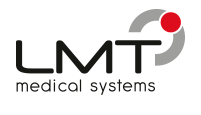Advanced Scanner Produces Whole-Body PET Images in Seconds
|
By MedImaging International staff writers Posted on 24 Jun 2019 |

Image: Whole-body PET scans can now be done in 20 seconds (Photo courtesy of UCD).
A modified positron emission tomography (PET) scanner can create three dimensional (3D) renderings of the entire human body in as little as 20 seconds, and with less radioactive exposure.
Developed by researchers at the University of California Davis (UCD; USA), the University of Pennsylvania (Philadelphia, PA, USA), United Imaging Healthcare (UIH; Shanghai, China), and other institutions, the two-meter long device is made of eight PET scanner rings, each 25 centimeters thick, that can image the entire body at once. By combining eight scans into one, total body rendering can be accomplished in 1/40 of the time of a conventional PET scanner, as well as using 1/40 of the radiation dose.
The modified PET scanner, which is called Explorer, could be especially helpful for imaging children, who tend to move around inside a scanner and ruin the measurements, as well as in pharmacological studies that examine how a radioactive tracer spreads through the body. For example, the device could be used with a radioactive sugar tracer that is ingested by bacterial, but not mammalian cells. Other types of tracers could be used to distinguish between different bacteria. The capabilities of Explorer were shown at the US National Institutes of Health (NIH) High-Risk, High-Reward research symposium, held during June 2019 in Bethesda (MD, USA).
“The level of detail was astonishing, especially once we got the reconstruction method a bit more optimized. We could see features that you just don't see on regular PET scans,” said Explorer presenter Ramsey Badawi, MD, chief of nuclear medicine at UCD and vice-chair for research in the department of radiology. “The dynamic sequence showing the radiotracer moving around the body in three dimensions over time was, frankly, mind-blowing. There is no other device that can obtain data like this in humans, so this is truly novel.”
PET scans are widely used to diagnose and track a variety of diseases, including cancer, because they show how organs and tissues function in the body, in contrast to MRI or CT scans, which mostly show anatomy. Using radioactive tracers that produce a signal from within the body, PET scanners produce a 3D image that is constructed by computers using sophisticated mathematical techniques. The Explorer project was designed to address the shortcomings of current scanning technology, which requires more time and exposes the patient to more radiation because scans are done in small segments.
Related Links:
University of California Davis
University of Pennsylvania
United Imaging Healthcare
Developed by researchers at the University of California Davis (UCD; USA), the University of Pennsylvania (Philadelphia, PA, USA), United Imaging Healthcare (UIH; Shanghai, China), and other institutions, the two-meter long device is made of eight PET scanner rings, each 25 centimeters thick, that can image the entire body at once. By combining eight scans into one, total body rendering can be accomplished in 1/40 of the time of a conventional PET scanner, as well as using 1/40 of the radiation dose.
The modified PET scanner, which is called Explorer, could be especially helpful for imaging children, who tend to move around inside a scanner and ruin the measurements, as well as in pharmacological studies that examine how a radioactive tracer spreads through the body. For example, the device could be used with a radioactive sugar tracer that is ingested by bacterial, but not mammalian cells. Other types of tracers could be used to distinguish between different bacteria. The capabilities of Explorer were shown at the US National Institutes of Health (NIH) High-Risk, High-Reward research symposium, held during June 2019 in Bethesda (MD, USA).
“The level of detail was astonishing, especially once we got the reconstruction method a bit more optimized. We could see features that you just don't see on regular PET scans,” said Explorer presenter Ramsey Badawi, MD, chief of nuclear medicine at UCD and vice-chair for research in the department of radiology. “The dynamic sequence showing the radiotracer moving around the body in three dimensions over time was, frankly, mind-blowing. There is no other device that can obtain data like this in humans, so this is truly novel.”
PET scans are widely used to diagnose and track a variety of diseases, including cancer, because they show how organs and tissues function in the body, in contrast to MRI or CT scans, which mostly show anatomy. Using radioactive tracers that produce a signal from within the body, PET scanners produce a 3D image that is constructed by computers using sophisticated mathematical techniques. The Explorer project was designed to address the shortcomings of current scanning technology, which requires more time and exposes the patient to more radiation because scans are done in small segments.
Related Links:
University of California Davis
University of Pennsylvania
United Imaging Healthcare
Latest General/Advanced Imaging News
- New AI Method Captures Uncertainty in Medical Images
- CT Coronary Angiography Reduces Need for Invasive Tests to Diagnose Coronary Artery Disease
- Novel Blood Test Could Reduce Need for PET Imaging of Patients with Alzheimer’s
- CT-Based Deep Learning Algorithm Accurately Differentiates Benign From Malignant Vertebral Fractures
- Minimally Invasive Procedure Could Help Patients Avoid Thyroid Surgery
- Self-Driving Mobile C-Arm Reduces Imaging Time during Surgery
- AR Application Turns Medical Scans Into Holograms for Assistance in Surgical Planning
- Imaging Technology Provides Ground-Breaking New Approach for Diagnosing and Treating Bowel Cancer
- CT Coronary Calcium Scoring Predicts Heart Attacks and Strokes
- AI Model Detects 90% of Lymphatic Cancer Cases from PET and CT Images
- Breakthrough Technology Revolutionizes Breast Imaging
- State-Of-The-Art System Enhances Accuracy of Image-Guided Diagnostic and Interventional Procedures
- Catheter-Based Device with New Cardiovascular Imaging Approach Offers Unprecedented View of Dangerous Plaques
- AI Model Draws Maps to Accurately Identify Tumors and Diseases in Medical Images
- AI-Enabled CT System Provides More Accurate and Reliable Imaging Results
- Routine Chest CT Exams Can Identify Patients at Risk for Cardiovascular Disease
Channels
Radiography
view channel
Novel Breast Imaging System Proves As Effective As Mammography
Breast cancer remains the most frequently diagnosed cancer among women. It is projected that one in eight women will be diagnosed with breast cancer during her lifetime, and one in 42 women who turn 50... Read more
AI Assistance Improves Breast-Cancer Screening by Reducing False Positives
Radiologists typically detect one case of cancer for every 200 mammograms reviewed. However, these evaluations often result in false positives, leading to unnecessary patient recalls for additional testing,... Read moreMRI
view channel
PET/MRI Improves Diagnostic Accuracy for Prostate Cancer Patients
The Prostate Imaging Reporting and Data System (PI-RADS) is a five-point scale to assess potential prostate cancer in MR images. PI-RADS category 3 which offers an unclear suggestion of clinically significant... Read more
Next Generation MR-Guided Focused Ultrasound Ushers In Future of Incisionless Neurosurgery
Essential tremor, often called familial, idiopathic, or benign tremor, leads to uncontrollable shaking that significantly affects a person’s life. When traditional medications do not alleviate symptoms,... Read more
Two-Part MRI Scan Detects Prostate Cancer More Quickly without Compromising Diagnostic Quality
Prostate cancer ranks as the most prevalent cancer among men. Over the last decade, the introduction of MRI scans has significantly transformed the diagnosis process, marking the most substantial advancement... Read moreUltrasound
view channel
Deep Learning Advances Super-Resolution Ultrasound Imaging
Ultrasound localization microscopy (ULM) is an advanced imaging technique that offers high-resolution visualization of microvascular structures. It employs microbubbles, FDA-approved contrast agents, injected... Read more
Novel Ultrasound-Launched Targeted Nanoparticle Eliminates Biofilm and Bacterial Infection
Biofilms, formed by bacteria aggregating into dense communities for protection against harsh environmental conditions, are a significant contributor to various infectious diseases. Biofilms frequently... Read moreNuclear Medicine
view channel
New SPECT/CT Technique Could Change Imaging Practices and Increase Patient Access
The development of lead-212 (212Pb)-PSMA–based targeted alpha therapy (TAT) is garnering significant interest in treating patients with metastatic castration-resistant prostate cancer. The imaging of 212Pb,... Read moreNew Radiotheranostic System Detects and Treats Ovarian Cancer Noninvasively
Ovarian cancer is the most lethal gynecological cancer, with less than a 30% five-year survival rate for those diagnosed in late stages. Despite surgery and platinum-based chemotherapy being the standard... Read more
AI System Automatically and Reliably Detects Cardiac Amyloidosis Using Scintigraphy Imaging
Cardiac amyloidosis, a condition characterized by the buildup of abnormal protein deposits (amyloids) in the heart muscle, severely affects heart function and can lead to heart failure or death without... Read moreImaging IT
view channel
New Google Cloud Medical Imaging Suite Makes Imaging Healthcare Data More Accessible
Medical imaging is a critical tool used to diagnose patients, and there are billions of medical images scanned globally each year. Imaging data accounts for about 90% of all healthcare data1 and, until... Read more
Global AI in Medical Diagnostics Market to Be Driven by Demand for Image Recognition in Radiology
The global artificial intelligence (AI) in medical diagnostics market is expanding with early disease detection being one of its key applications and image recognition becoming a compelling consumer proposition... Read moreIndustry News
view channel
Bayer and Google Partner on New AI Product for Radiologists
Medical imaging data comprises around 90% of all healthcare data, and it is a highly complex and rich clinical data modality and serves as a vital tool for diagnosing patients. Each year, billions of medical... Read more





















